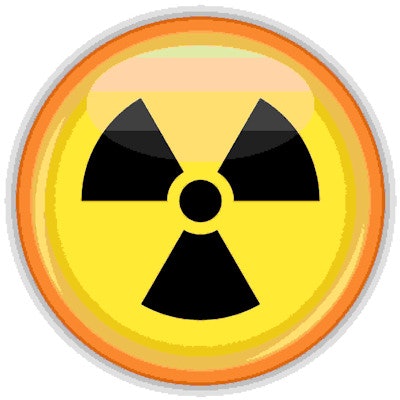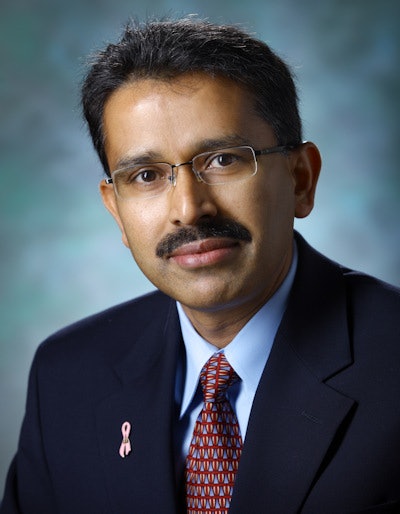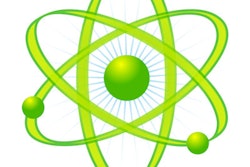
An increasing number of cancer patients are undergoing advanced radiation therapy procedures such as radionuclide treatment. Yet more individuals are choosing cremation over burial -- leading some to wonder if the two trends are incompatible. They're not, according to a March 12 online presentation by representatives from Image Wisely.
 Mahadevappa Mahesh, PhD, chief physicist at the Johns Hopkins Hospital.
Mahadevappa Mahesh, PhD, chief physicist at the Johns Hopkins Hospital.In the talk, Mahadevappa Mahesh, PhD, chief physicist at the Johns Hopkins Hospital, emphasized the need for education, awareness, and cooperation between caregivers, radiation safety experts, and crematorium operators to avoid any public misconceptions and overreactions.
"Crematoriums should not be concerned about radiation doses, as long as the radiation safety principles are followed, and as long as the patients who are undergoing these targeted radionuclide therapies are monitored by a health, radiation, or medical physicist to make sure that the doses are not high," Mahesh said. "When properly processed and all radiation safety policies are followed, the harm to the crematorium staff is almost immeasurable."
Residual radiation
The issue of leftover radioactivity in deceased patients surfaced in a research letter published on February 26 in the Journal of the American Medical Association. The article detailed the case of a 69-year-old Arizona man who had undergone a lutetium-177 (Lu-177) radionuclide therapy and was cremated five days after the treatment. After the treating hospital notified the crematorium of the man's therapy, the facility performed a radiation survey on its equipment and staff.
While the crematorium found no detectable levels of Lu-177 in the urine of the crematory operator, it did discover some of the crematory equipment, including the oven, vacuum filter, and bone crusher, was emitting radiation in a range of 5,000 to 25,000 counts per minute, with the radioactivity primarily coming from Lu-177.
As a result of the JAMA paper, the American College of Radiology (ACR) and the American Association of Physicists in Medicine (AAPM) issued a joint statement to quell concerns about any radiation safety risks. Among the recommendations, the organizations advocated that healthcare facilities that use radioactive materials have a certified radiation safety officer onsite and that hospital morgues, funeral homes, and crematoriums install radiation detectors to warn of the potential presence of radioactivity.
"There is no need for new regulations," Mahesh added. "However, there should be a uniform policy or at least uniform education for this awareness in general. The health physicist and the medical physicist should work more closely to educate crematoriums, their staff, and so forth."
Cremation escalation
The need for such precautions certainly would be prudent, given that the number of cremations in the U.S. could reach as many as 2.8 million per year by 2035, according to a June 2018 report from the National Funeral Directors Association. The association attributes the nearly 30% increase to changing consumer preference, weakening religious prohibitions, and environmental concerns.
The U.S. is not alone in dealing with cremations and their potential radiation aftereffects. The Canadian province of Ontario currently is looking into its law that bans the cremation of patients who have died after receiving brachytherapy implants as part of their radiation therapy treatments. The statute came to light recently when a family was denied cremation of a deceased relative who had received the treatment.
The family eventually was able to obtain a health certificate and have the relative cremated, but, more importantly, opponents of the ban contend that the prohibition has prompted some patients to refuse brachytherapy treatment because they cannot be cremated after death, according to a March 7 article by CBC News.
"It is disturbing to know that one such arcane law exists," Mahesh said. "Some people have religious beliefs about being cremated and decline to get some type of treatment in the last few days of their lives because they are worried that they would be declined cremation. These [situations] have to be understood and changed appropriately."
Informational outlets
Mahesh offered several outlets from which both healthcare and laypeople can obtain additional information and guidelines on how best to handle the remains of those who have died soon after undergoing radiation therapy.
The National Council on Radiation Protection and Measurements has published a report, titled "Management of Radionuclide Therapy Patients," that describes different scenarios for how to deal with patients undergoing radionuclide therapy and what to do after they die. The U.S. Centers for Disease Control and Prevention (CDC) also has guidelines for handling decedents who might be contaminated with radioactive materials.
"We need to educate more about these situations," Mahesh added. "I understand there is concern among the crematorium staff about radiation exposure. In that regard, they need to work hand in hand with the hospital radiation safety officer, the health physicist, or the medical physicist to see how these patients are monitored and make sure that there is no radiation coming out of the deceased body when it is brought to the crematorium."




















